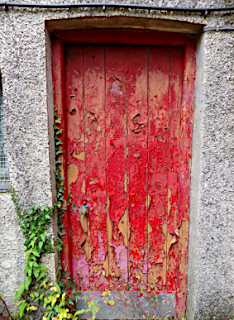The extensive freshwater marshes at Oxwich, lying behind the
impressive sand dune system are the largest on the peninsula. Originally part
of the old Penrice Estate, they are now owned and managed by Natural Resources
Wales as a National Nature Reserve. Over the last century the large man-made
serpentine lake with wet meadows, succeeded into what is now an area of reed
beds and flashes, which are rapidly being invaded by willow and alder carr. In
the mid 1970s the marsh was probably the most productive and finest in Wales,
but even now after years of neglect, good numbers of reed and sedge warblers
and reed buntings still remain, together with a well-established population of
Cetti’s warblers.
A hidden squelchy path allows me to peer through the reeds
and get a glimpse of a skulking reed warbler carrying a bright azure blue damselfly. They have young in the nest at this time, and the 400 or so pairs do well here
from the rich pickings in the surrounding willows. Willow warblers and
chiffchaffs still sing, they seem to be more common this year, and are a
feature of the marsh. I pass the much-reduced heronry looking for little
egrets, which have nested with the grey herons in the mature willows, but maybe
not this year. In the 1970s purple herons and a little bittern regularly
frequented the marsh in summer, and may reappear as global temperatures rise.
At twilight, starlings begin to circle overhead, and a
handful of swallows hunt low over the tops of the reeds. Both roost here, and
in a month or so their numbers will increase to many hundreds. The honking
sounds of graylag geese punctuate the evening silence, and tawny owls call from
the surrounding woodlands, but the twilight calls of the once regular nightjars and snipe have
long been history.

















